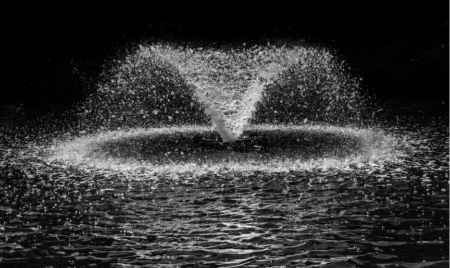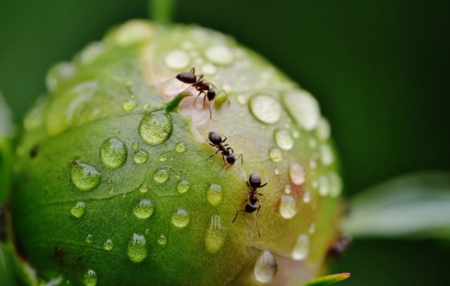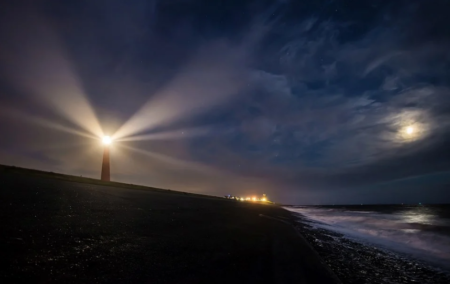In this article Fr. Cornelius Casey reflects on the Well-Springs of Hope and offers some inspiring and challenging thoughts.
Extracts from this article:
How deep are the well-springs of hope? Does it go all the way down? In the last book of the Bible, the Book of Revelation, there is a vision of a Lamb ’looking as if it had been slain,’ standing amid the ruins of history. Then, to great rejoicing, the Lamb comes forward to take the scroll of history from the one who is sitting on the Throne.
The concept of hope is deeply embedded in the Christian narrative. In advance of a reflection on specifically Christian hope, let us ask the simple question, ‘what is hope? The plain answer is that hope is a form of desire. ‘I really hope we can have a good outcome to this current health crisis.’ Hope has its beginnings in our yearnings. Yet there is more to hope desire, than yearning. I must do whatever I can to bring it about that this health crisis will pass. Hope is a matter of performance, as well as a matter of desire. Hope is something we do.
Hope scrutinises reasons for persisting in hope, as no doubt Nelson Mandela did during long years of incarceration. Reasons for hope are constitutive of hope, part of its nourishment, part of its engagement with moral realism. It is s not a hunch. ‘Always be ready to give reasons for the hope that is in you’ (1 Pet 3:15), is the instruction in one of the letters of early Christians that are collected in the New Testament.
Yet at the heart of this event (Author is referring to crucifixion on Calvary) there remained the fidelity of Jesus to his Father. His Father is the One who sent him to be the Word of the Father dwelling among us. It is precisely here in that fidelity of Jesus that Christian hope is enacted. It is akin to the creation of the world out of nothing. Its range and significance narrated in the Book of Revelation: ‘Then I saw a new heaven and a new earth; for the first heaven and the first earth had passed away. And the one seated on the throne said, ‘See, I am making all things new’.
Charles Péguy, (1873 – 1914), French poet and philosopher, is the supreme of this new hope. Its strangeness, its ordinariness, its extraordinariness, its fragility and its catholicity is the theme of his wonderful, long poem, The Portal of the Mystery of Hope. Péguy’s writings combine Christianity, socialism, and patriotism. Patriotism, and above all socialism, came first into his life, Christianity came later.
His poem narrating and celebrating hope sprang from his most profound despair. The story of hope is narrated by God. ‘What surprises me’, says God, ‘is hope’. Faith is understandable, says God, because of the splendor of creation, the movements of the stars in heaven, the wind that blows upon the sea, and the wind that blows in the valley and ‘in the tiny one, in my tiny creature, in the tiny ant’, and above all, in the human heart, and in the sacraments. The opening verses of the poem are reminiscent of the Franciscan ‘Canticle of Creatures’. In the recital, God concludes, faith doesn’t surprise me because ‘in order really not to see me these poor people would have to be blind.’ Charity, says God, that doesn’t surprise me either. ‘It’s not surprising’. How could they not love each other, and my Son who had such a great love. ‘But hope, says God, that is something that surprises me, even me, I can’t get over it.’
As the poem proceeds, it celebrates the ordinariness of hope, the way hope is woven deep into the fabric of the ordinary life of ‘my poor people’. Workers in the fields or the forest or at home are thinking of their children. The children fill their horizon. They work in hope. They themselves will not be around forever. They think tenderly of the time which will be their children’s time, no longer their time. The fields, the forests, the homes, the tools they are using, these are all instruments speaking of hope. They will be their children’s fields and forests and homes and tools. ‘They see how things are going today and believe that they will go better tomorrow morning’ This ordinary human hope is fragile. It is anxious, vacillating, and yet constant. The poem refers this ordinary human hope as ‘the little girl of hope’. Like the sanctuary light in the church, it flickers but stays constant. ‘It is by far the greatest marvel of our grace’, says God, ‘and I’m surprised by it myself’.
The poem instructs us: ‘Therein my child lies the secret. Therein lies the mystery’. The mystery is that our ordinary hopes are God’s hope. Their source is in God. The little child of hope, our ordinary hope, is God’s child. That is the mystery, and in baptism, ‘the sacrament of beginning’ it becomes the deep mystery of our very particular stories of hope.
The catholicity of hope, its universal coverage, is the concluding theme of the poem. On the way to this conclusion, the poem meditates on the significance of night and of night rest. Night refreshes. ‘Night is the most beautiful of all my creation’. Night is the reservoir of being, as the sea is the reservoir of water. ‘Night is the dwelling place of hope’. We are all covered at night with the mantle of hope. As darkness falls on Calvary, the burial of Jesus and of all human history is covered with the mantle of night, the reservoir of being, the dwelling place of hope.
PERFORMING HOPE
Hope is something we do, not just a way of thinking and feeling and yearning. The first social practice of theological hope is the practice of prayer. Prayer is the idiom of Christian hope.
Péguy has the beautiful image of people passing the holy water, baptismal water from hand to hand, in a relay, passing on hope from one to another: ‘We pass to each other’, says Péguy, ‘we give each other. From neighbour to neighbour, one after the other, like a relay, the same hope is passed on.’
In a curious way, the deprivation of the coronavirus time is a reminder, not a denial, of this reality. Hope, hope coming to us always as a new creation, is nonetheless a reality to be nourished, to be learned, to be cultivated in the company of others.
To read the article in full, please click here
This article was first published in Doctrine & Life (Vol. 70 No, 5, May – June 2020) and was written by Cornelius J. Casey C.Ss.R.





